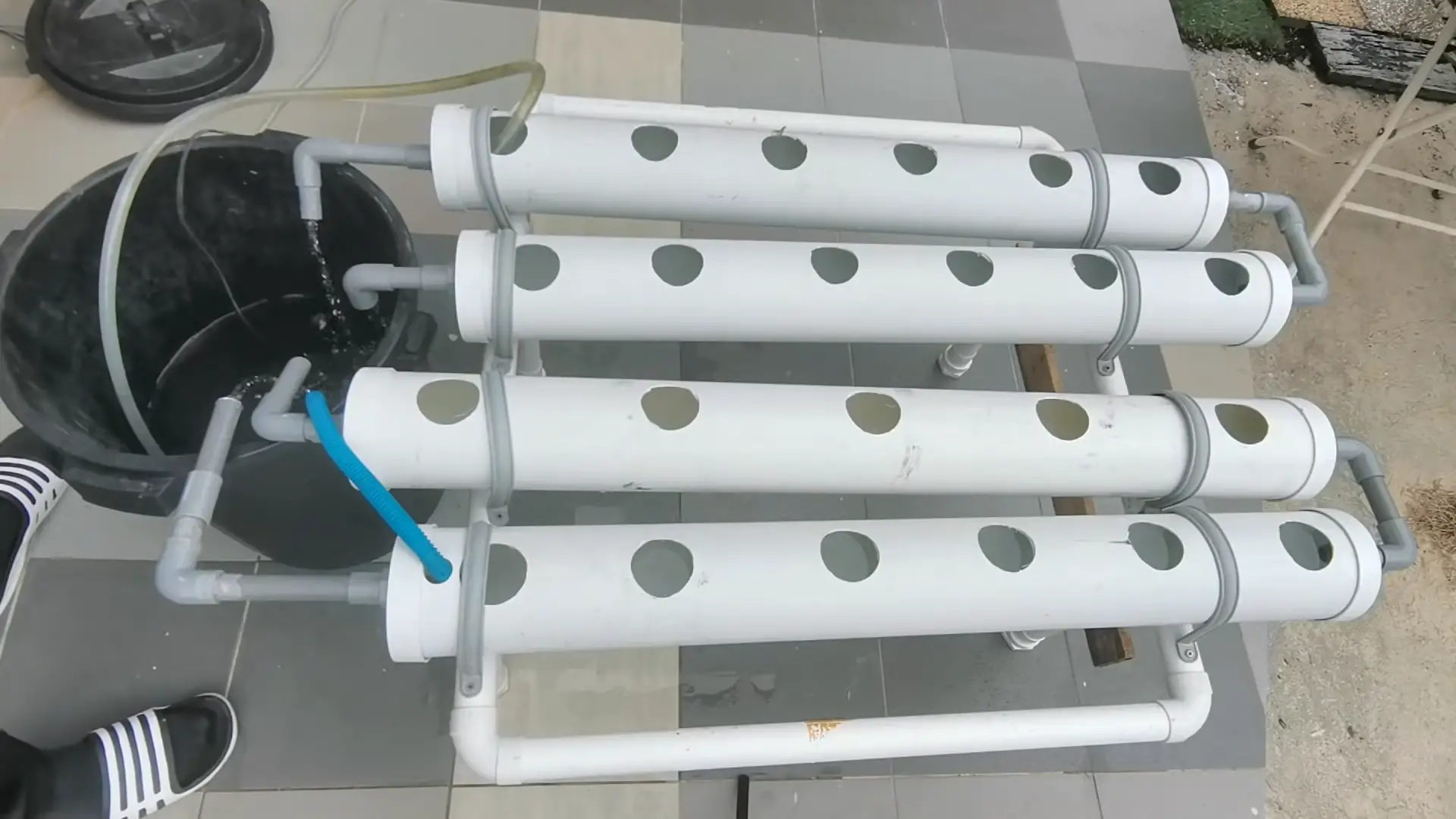Hydroponics is a game-changer, allowing year-round cultivation in any environment with higher yields and less water usage. Curious about trying it at home? Follow these steps to create your own hydroponic system using PVC pipes.
Materials You’ll Need:
- 4 pieces of 4″ PVC pipes, each 3ft
- 8 pipe end caps
- 8 PT Elbow 15 mm
- 8 pieces of 4″ pipe clips
Stand Materials:
- 4 Elbows 36 mm
- 4 Tees 36 mm
- 12 ft. long PVC pipe 36 mm (cut according to needs)
Construction Steps:
- Assembling PVC Tubes:
- Connect the pipes, end caps, and elbows to form the basic structure of the hydroponic system.
- Building the Stand:
- Use the elbows and tees to create the stand on which your hydroponic system will rest.
- Installing Pipe Clips:
- Attach the pipe clips to the structure to secure the pipes in place.
- Cutting the Pipes:
- Measure and cut the PVC pipes to the required dimensions for your project.
Why Choose PVC for a Hydroponic System:
Hydroponics, derived from the Greek words “hydro” for water and “panics” for labor, offers an efficient soilless cultivation method. Hydroponic systems based on metal or plastic can be costly, while PVC provides an affordable and easy-to-assemble alternative.
Advantages of PVC:
- Affordable Price: PVC is budget-friendly, allowing room for experimentation and trial.
- Lightweight and Easy to Handle: PVC pipes are lighter than other materials like steel, making handling and setup hassle-free.
- Non-Toxic and Soluble: PVC is safe for plants and can be used securely in a hydroponic growing environment.
Outdoor Performance:
Hydroponic systems using PVC pipes perform excellently outdoors, enduring various weather conditions.
In summary, building a hydroponic system with PVC is cost-effective, easy to assemble, and offers excellent performance for your plant growth, even in outdoor settings. Thanks for watching the video! Don’t forget to give it a thumbs up if you liked it, and subscribe for more hydroponic gardening content! #DIYHYDROPONIC #hidroponik #hydroponicgarden 🌿💦
